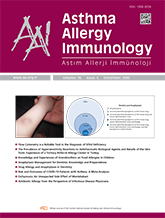


Objective: Anaphylaxis is a fulminant hypersensitivity reaction that threatens life. Local anesthetics used by dentists might cause anaphylaxis. In this study, we aimed to assess the knowledge levels of dentists regarding local anesthetic allergy and anaphylaxis and to evaluate if the knowledge levels could be increased by training.
Materials and Methods: Ninety-five (49F/46M) dentists volunteered to participate in this survey. Questionnaire forms were filled in by face-to-face interviews with the dentists. Subsequently, a training program on drug allergy and anaphylaxis was conducted and three days later the questionnaire forms were filled in again.
Results: The recognition rate of anaphylaxis symptoms was 50%, before the training and it increased to 91.6% after the training (p<0.001). The percentage of dentists who recognized the first medication to be used in case of anaphylaxis was 81.3% before the training and it increased to 100% after the training (p<0.001). The percentage of dentists who knew the administration route and location of adrenaline were 64.6% and 30.2%, respectively before the training and these numbers were 100% and 97.9% after the training (p<0.001).
Conclusion: In conclusion, the results showed that dentists had minor information deficiencies regarding local anesthetic allergy and anaphylaxis that could be corrected by training.